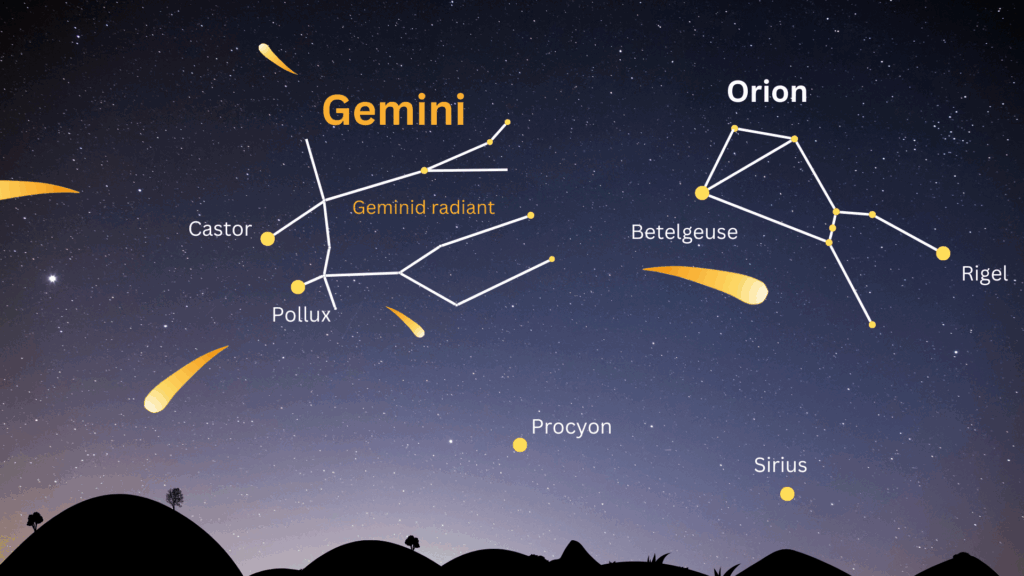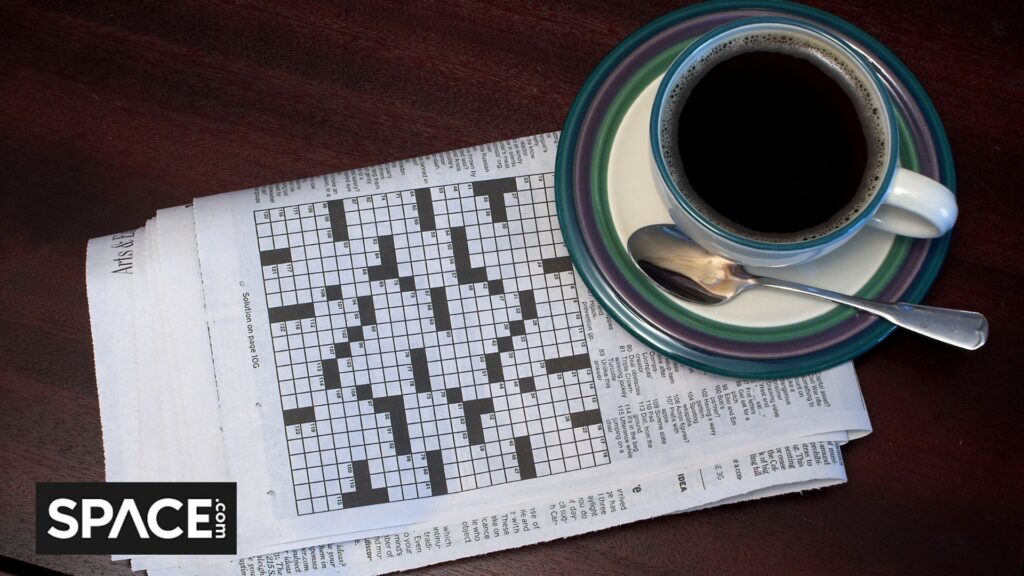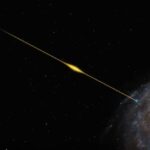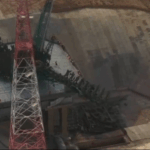Now Reading: NASA diagnoses fracture in a ‘huge cosmic bone’ using X-ray observatory
-
01
NASA diagnoses fracture in a ‘huge cosmic bone’ using X-ray observatory
NASA diagnoses fracture in a ‘huge cosmic bone’ using X-ray observatory
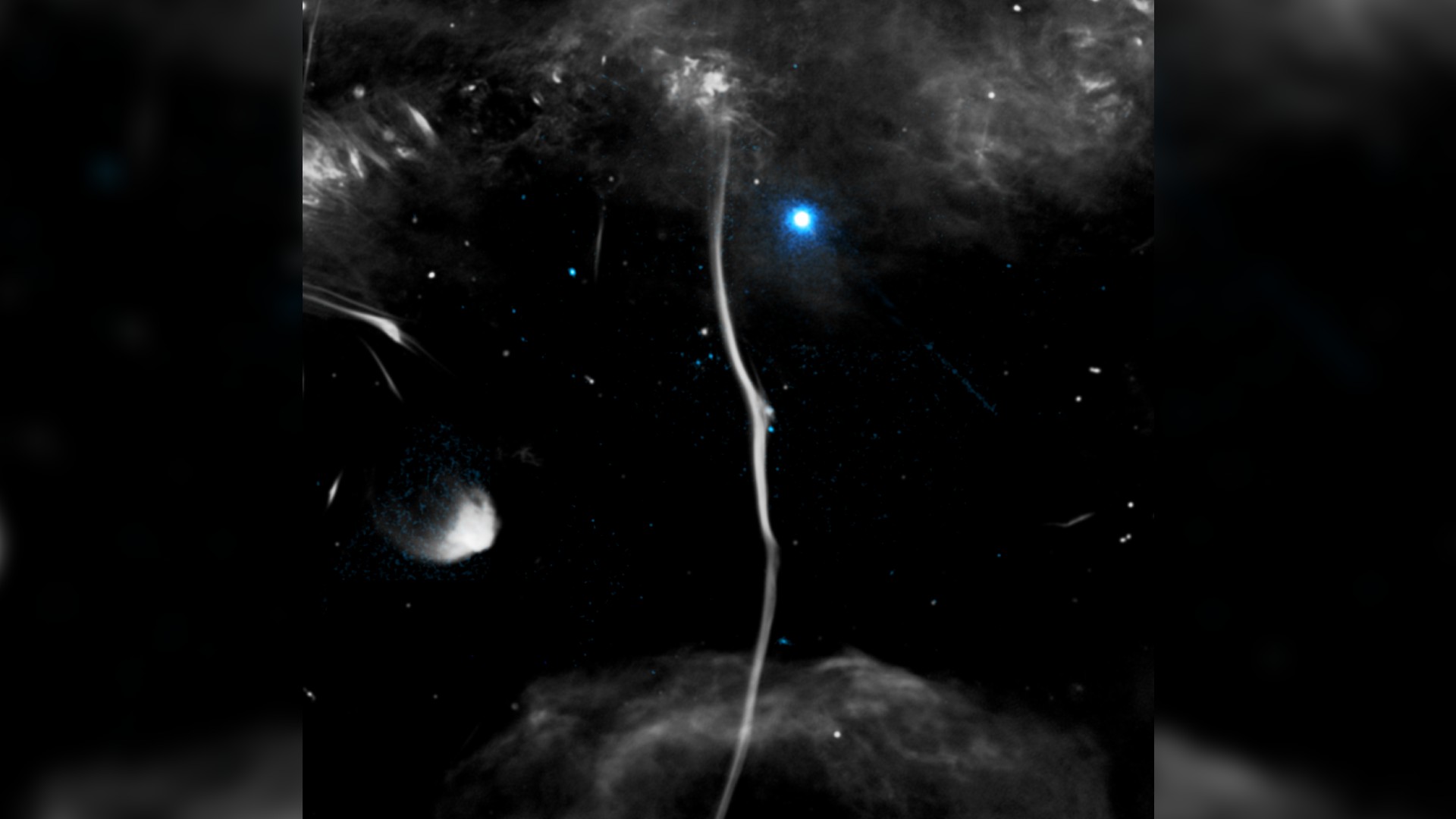
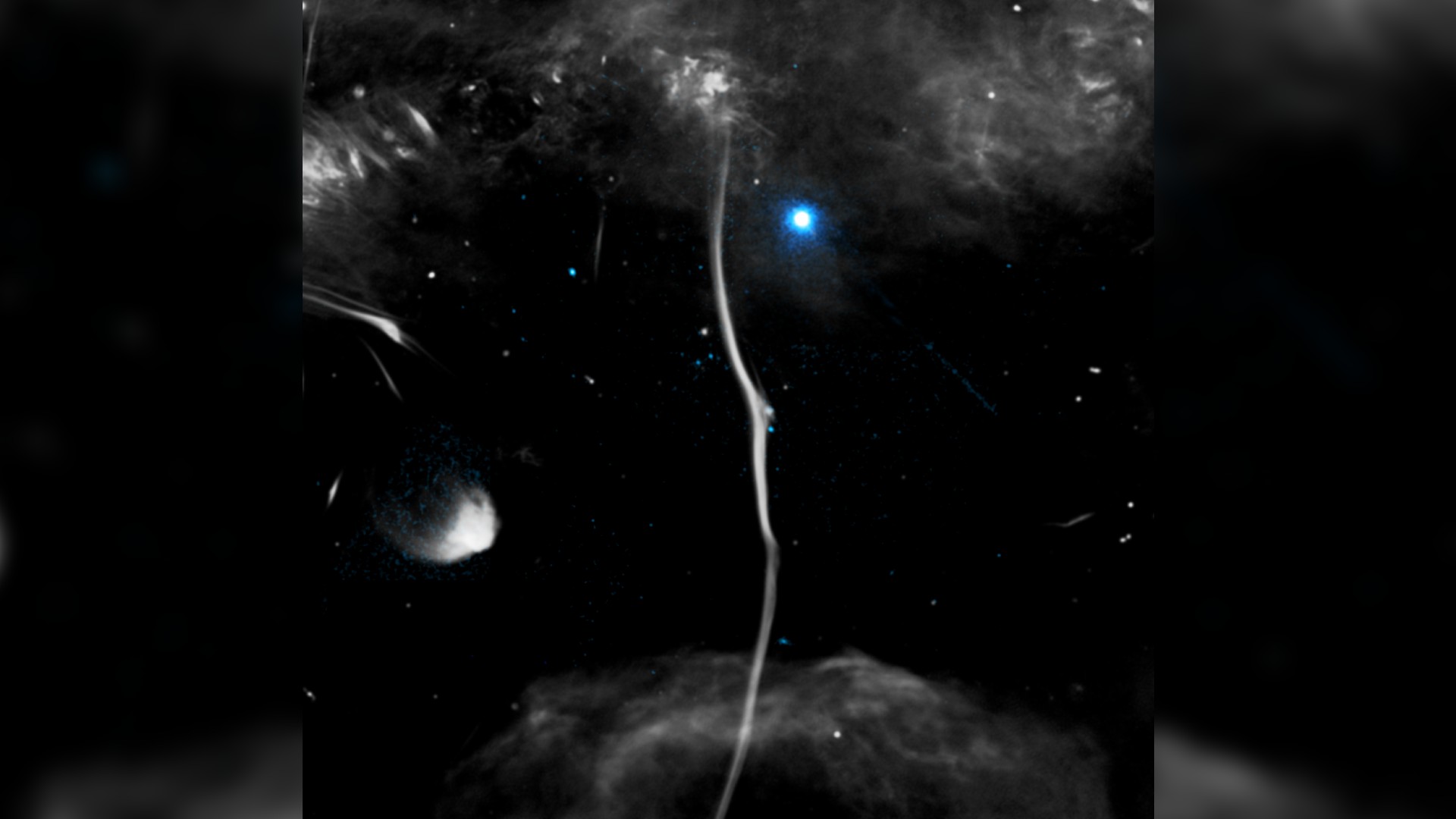
Have you ever had an X-ray taken of your bones? Well, so has the Milky Way. NASA’s Chandra X-ray Observatory regularly images our home galaxy, and a recent scan caught something that might be familiar to some of you: a fractured “bone.”
The bone-like structure in the image above was imaged using radio data from MeerKAT radio array in South Africa and the National Science Foundation’s Very Large Array in New Mexico — you’ll notice a slight fracture in the structure a little more than a third of the way down.
Overlaying Chandra’s X-ray data (shown in bright blue) with the radio data reveals the likely cause of the fracture to be an impact from a pulsar, a rapidly spinning neutron star that sends out pulses of radiation at regular intervals. Of course, the ghostly structure isn’t a real bone, but rather a galactic center filament, one of many massive structures created by radio waves threaded along magnetic fields at the center of the Milky Way galaxy.
The particular cosmic “bone” shown here is G359.13142-0.20005 (G359.13 for short, or sometimes referred to as the Snake), and it’s one of the brightest and longest galactic center filaments we’ve spotted. Located some 26,000 light-years from Earth, it’s about 230 light-years long.
Scientists suspect that the pulsar slammed into G359.13 at a staggering speed between one million and two million miles per hour (1.6 million to 3.2 million km per hour).
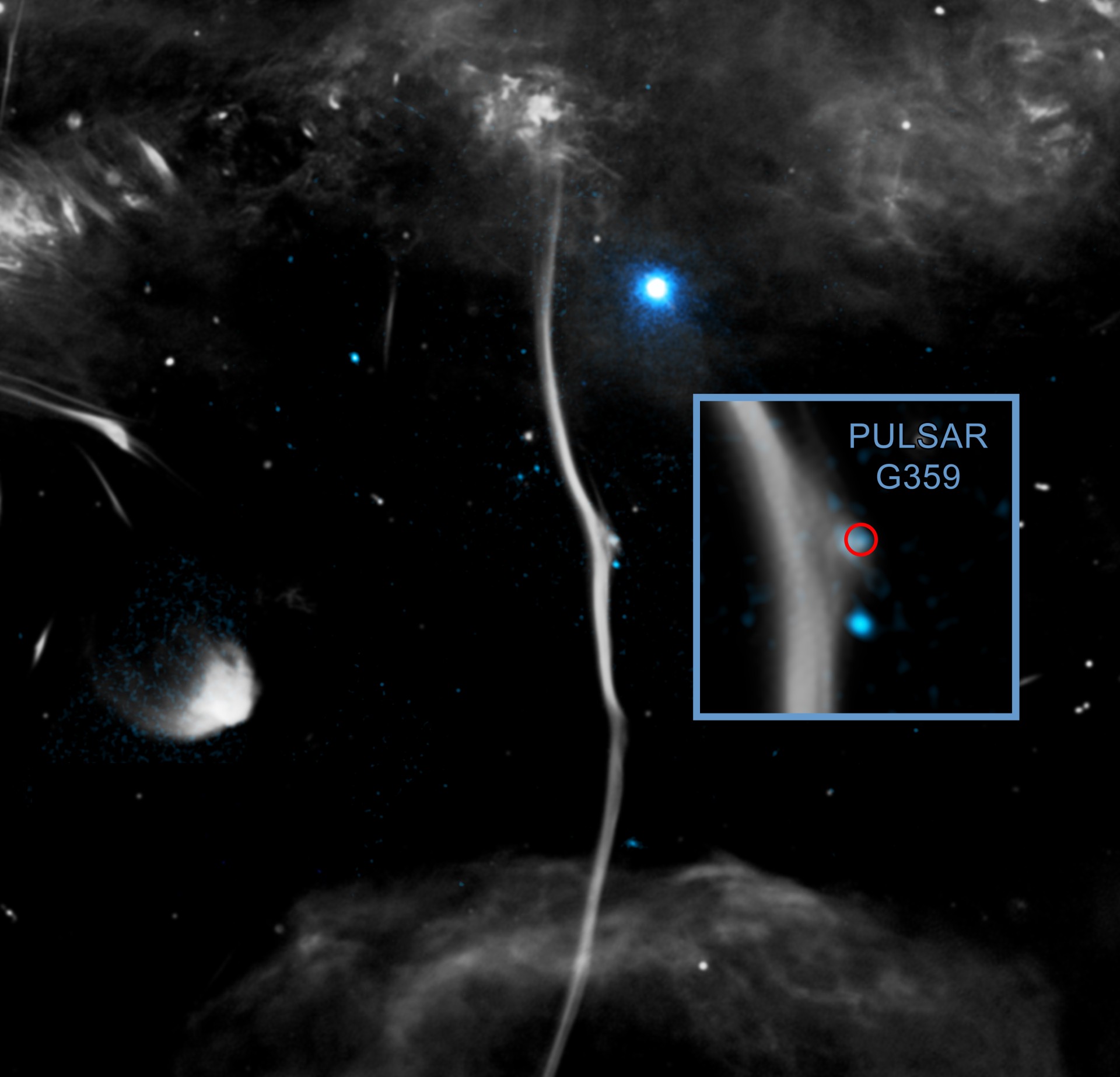
RELATED STORIES:
Given that neutron stars are extremely dense — in fact, they’re the densest known stars in the universe — it’s no surprise that a high-speed collision easily distorted the filament’s magnetic field, creating the fracture.
Since it’s not likely that the Milky Way will be able to bind a 230-light-year-long galactic center filament in a cast, we’re going to have to hope this fracture will heal itself over the millennia.
This research has been published in the May 2024 issue of the Monthly Notices of the Royal Astronomical Society.
Stay Informed With the Latest & Most Important News
Previous Post
Next Post
-
 012024 in Review: Highlights from NASA in Silicon Valley
012024 in Review: Highlights from NASA in Silicon Valley -
 02Panasonic Leica Summilux DG 15mm f/1.7 ASPH review
02Panasonic Leica Summilux DG 15mm f/1.7 ASPH review -
 03How New NASA, India Earth Satellite NISAR Will See Earth
03How New NASA, India Earth Satellite NISAR Will See Earth -
 04And Thus Begins A New Year For Life On Earth
04And Thus Begins A New Year For Life On Earth -
 05Astronomy Activation Ambassadors: A New Era
05Astronomy Activation Ambassadors: A New Era -
 06From Polymerization-Enabled Folding and Assembly to Chemical Evolution: Key Processes for Emergence of Functional Polymers in the Origin of Life
06From Polymerization-Enabled Folding and Assembly to Chemical Evolution: Key Processes for Emergence of Functional Polymers in the Origin of Life -
07SpaceX launch surge helps set new global launch record in 2024












